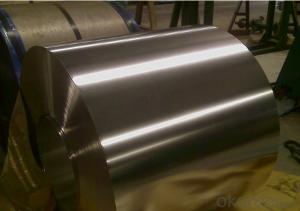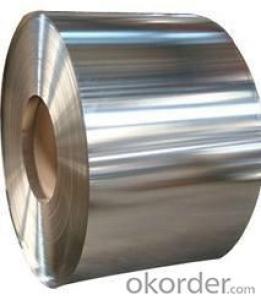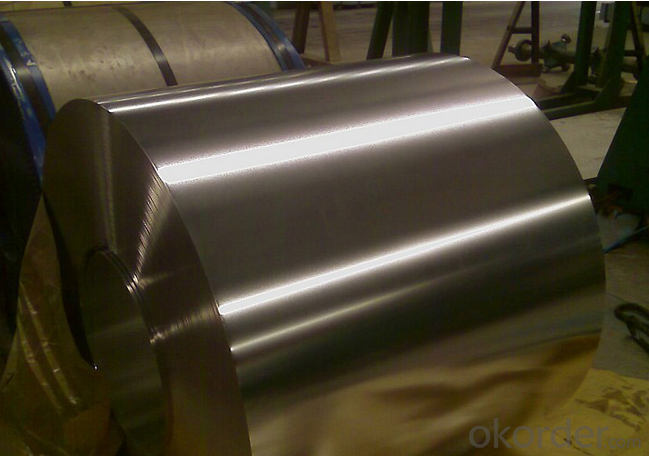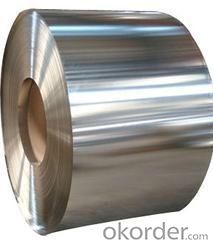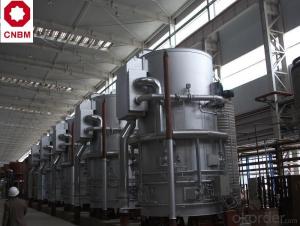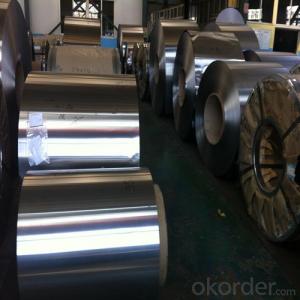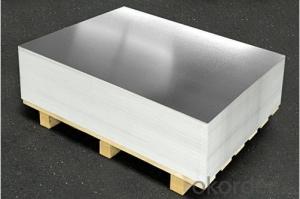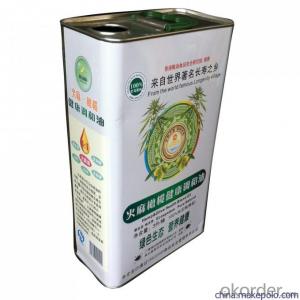Electrolytic Tinplate for Foods Can Packaging
- Loading Port:
- Tianjin
- Payment Terms:
- TT OR LC
- Min Order Qty:
- 25 m.t
- Supply Capability:
- 7000 m.t/month
OKorder Service Pledge
OKorder Financial Service
You Might Also Like
1.Structure of Electrolytic Tin Plate Coils and Sheets for Foods Metal Packaging Description
Electrolytic Tin Plate Coils and Sheets for Foods Metal Packaging, is one thin steel sheet with a coating of tin applied by electrolytic deposition. Tinplate made by this process is essentially a sandwich in which the central core is strip steel. This core is cleaned in a pickling solution and then fed through tanks containing electrolyte, where tin is deposited on both sides. As the strip passes between high-frequency electric induction coils, it is heated so that the tin coating melts and flows to form a lustrous coat.
2.Main Features of the Electrolytic Tin Plate Coils and Sheets for Foods Metal Packaging
Appearance – Electrolytic Tin Plate is characterized by its beautiful metallic luster. Products with various kinds of surface roughness are produced by selecting the surface finish of the substrate steel sheet.
Paintability and printability – Electrolytic Tin Plates have excellent paintability and printability. Printing is beautifully finished using various lacquers and inks.
Formability and strength – Electrolytic Tin Plates have got very good formability and strength. By selecting a proper temper grade, appropriate formability is obtained for different applications as well as the required strength after forming.
Corrosion resistance – Tinplate has got good corrosion resistance. By selecting a proper coating weight, appropriate corrosion resistance is obtained against container contents. Coated items should meet 24 hour 5 % salt spray requirement.
Solderability and weldability – Electrolytic Tin Plates can be joined both by soldering or welding. These properties of tinplate are used for making various types of cans.
Hygienic – Tin coating provides good and non toxic barrier properties to protect food products from impurities, bacteria, moisture, light and odours.
Safe – Tinplate being low weight and high strength makes food cans easy to ship and transport.
Eco friendly – Tinplate offers 100 % recyclability.
Tin is not good for low temperature applications since it changes structure and loses adhesion when exposed to temperatures below – 40 deg C.
3.Electrolytic Tin Plate Coils and Sheets for Foods Metal Packaging Images
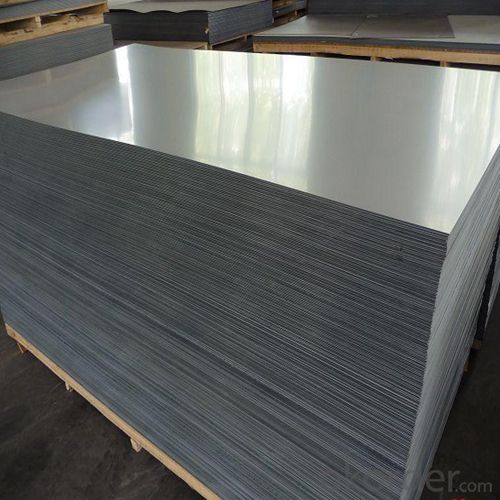
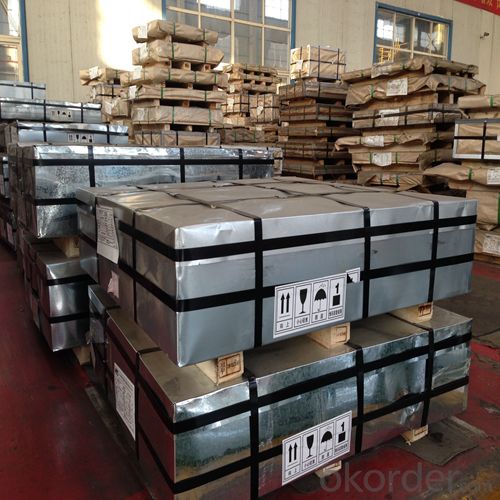

4.Electrolytic Tin Plate Coils and Sheets for Foods Metal Packaging Specification
Standard | ISO 11949 -1995, GB/T2520-2000,JIS G3303,ASTM A623, BS EN 10202
|
Material | MR,SPCC |
Thickness | 0.15mm - 0.50mm |
Width | 600mm -1150mm |
Temper | T1-T5 |
Annealing | BA & CA |
Coil Inner Diameter | 508mm |
Weight | 6-10 tons/coil 1~1.7 tons/sheets bundle |
Passivation | 311 |
Oil | DOS |
Surface | Finish,bright,stone,matte,silver |
5.FAQ of Electrolytic Tin Plate Coils and Sheets for Foods Metal Packaging
-What your tinplate material is used for ?
Tinplate is widely used for the packaging of products. Such as food cans,
beverage cans, pet cans, closures, general line cans and so on.
Printed Tinplate is offered!!
-How to place .an order or contact you ?
Please send us Email. we will give you a quick response in seconds .
- How is your quality ?
All our quality is prime even the secondary quality . We have many years experience
In this field with serious quality control standard . Advanced equipment, We welcome your visit to our factory .
- Q: How to distinguish galvanized plate and tin plate
- General galvanized sheet used in home appliances and electronics industry, thicker. Tin plate, tinplate, used in packaging industry, thinner.
- Q: What kind of metal material is tinplate? How much is the current price per ton?
- Tinplate originated in Bohemia (now Czech and Slovakia). The land has been rich in metal technology since ancient times, and know how to use water power in the manufacture of machinery, from fourteenth Century onwards began to produce tinplate. For a long, long time, it has been the main source of tinplate in the world. Tin was mainly used for making tableware and drinking utensils.
- Q: How is tinplate recycled and what are its recycling rates?
- Tinplate, which is commonly used for food and beverage packaging, is recycled through a process called steel recycling. The recycling of tinplate involves collecting and separating it from other waste materials, followed by shredding, melting, and refining to produce new steel products. Tinplate has a high recycling rate, with approximately 80-90% of tinplate packaging being recycled globally. This high recycling rate is due to the fact that tinplate is a valuable material that can be easily and efficiently recycled, reducing the need for raw materials and minimizing environmental impact.
- Q: What are the benefits of using tinplate for paint cans?
- One of the main benefits of using tinplate for paint cans is its exceptional durability and resistance to corrosion. Tinplate is a coated steel material that provides a protective barrier against moisture, preventing rusting and extending the lifespan of the paint cans. Additionally, tinplate is a lightweight material, making it easy to handle and transport. It also offers excellent recyclability, making it an environmentally-friendly choice.
- Q: Can tinplate be used for furniture applications?
- Yes, tinplate can be used for furniture applications. Tinplate is a versatile material known for its strength and durability, making it suitable for various purposes including furniture. It can be used for making components, frames, or decorative elements in furniture designs. Additionally, tinplate is corrosion-resistant and can be easily shaped, allowing for creative and long-lasting furniture pieces.
- Q: What is the shelf life of tinplate?
- The shelf life of tinplate varies depending on various factors such as storage conditions, type of product packaged, and any protective coatings applied. However, tinplate typically has a long shelf life, often lasting several years, as it is known for its corrosion resistance and ability to protect packaged goods from external contaminants.
- Q: What are the advantages of using tinplate for signage?
- Some advantages of using tinplate for signage include its durability, versatility, and affordability. Tinplate is a strong and sturdy material that can withstand harsh weather conditions, making it suitable for outdoor signage. It can be easily molded into various shapes and sizes, allowing for creative and eye-catching designs. Additionally, tinplate is relatively cost-effective compared to other materials used for signage, making it a practical choice for businesses looking for a cost-efficient solution.
- Q: How does tinplate perform in terms of temperature resistance?
- Tinplate performs well in terms of temperature resistance, as it can withstand high temperatures without warping or losing its structural integrity.
- Q: What industries use tinplate packaging?
- Tinplate packaging is commonly used in various industries such as food and beverage, cosmetics, pharmaceuticals, and industrial products.
- Q: How is tinplate affected by exposure to UV light?
- Tinplate is not significantly affected by exposure to UV light since it is a highly durable material with good resistance to sunlight.
Send your message to us
Electrolytic Tinplate for Foods Can Packaging
- Loading Port:
- Tianjin
- Payment Terms:
- TT OR LC
- Min Order Qty:
- 25 m.t
- Supply Capability:
- 7000 m.t/month
OKorder Service Pledge
OKorder Financial Service
Similar products
Hot products
Hot Searches
Related keywords
